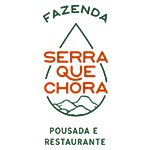PAs will receive a complimentary treatment from award-winning Six Senses Spas when booking a private jet charter through Chapman Freeborn, the World largest aircraft charter broker. Once Chapman Freeborn charter experts have arranged the boss executive flight itinerary, PAs will be invited to choose from a wide range of complimentary treatments and Asian-influenced therapies at one of Six Senses Spas.
The treatments will be redeemable at locations across Europe, the Middle East and Asia as well as the luxury spa at Pan Peninsula in Canary Wharf, regarded by many PAs working in the city as an urban sanctuary.
Chinese art, and in particular, Chinese painting is greatly treasured around the globe. Chinese painting can be retraced to as far back as six thousand years ago in the Neolithic Age when the Chinese have started using brushes in their paintings. Chinese art dates back even sooner than that.
Calligraphic scripts
- The Kufic script is the first of those calligraphic scripts to gain popularit.
- It was angular, made of square and short horizontal strokes, long verticals, and bold, compact circles.
- For three centuries, this script had been mainly used to copy the Quran.
- The cursive Naskh script was more often used for casual writing.
- This script had rounder letters and thin lines.
- It would come to be preferred to Kufic for copying the Quran as techniques for writing in this style were refined.
- Almost all printed material in Arabic is in Naskh.
- The Thuluth would take on the ornamental role formerly associated with the Kufic script in the 13th century.
- Thuluth is usually written in ample curves as it has a strong cursive aspect.
- The Persians took to using Arabic script for their own language, Persian after their conversion to Islam.
- The Taliq and Nastaliq styles were contributed to Arabic calligraphy by the Persians.
- Nastaliq style is extremely cursive, with exaggeratedly long horizontal strokes.
- The Diwani script is a cursive style of Arabic calligraphy.
- It was developed during the reign of the early Ottoman Turks (16th and early 17th centuries).
- This outstanding Diwani script was both decorative and communicative.
- Finally, Riqa is the most commonly used script for everyday use.
- It is simple and easy to write.
- Its movements are small.
- In China, a calligraphic form called Sini has been developed.
- This form has evident influences from Chinese calligraphy.
- Hajji Noor Deen Mi Guangjiang is a famous modern calligrapher in this tradition.
Lorem ipsum dolor sit amet, consectetuer adipiscing elit. Praesent aliquam, justo convallis luctus rutrum, erat nulla fermentum diam, at nonummy quam ante ac quam. Maecenas urna purus, fermentum id, molestie in, commodo porttitor, felis. Nam blandit quam ut lacus. Quisque ornare risus quis ligula. Phasellus tristique purus a augue condimentum adipiscing. Aenean sagittis. Etiam leo pede, rhoncus venenatis, tristique in, vulputate at, odio. Donec et ipsum et sapien vehicula nonummy. Suspendisse potenti. Fusce varius urna id quam. Sed neque mi, varius eget, tincidunt nec, suscipit id, libero. In eget purus. Vestibulum ut nisl. Donec eu mi sed turpis feugiat feugiat. Integer turpis arcu, pellentesque eget, cursus et, fermentum ut, sapien. Fusce metus mi, eleifend sollicitudin, molestie id, varius et, nibh. Donec nec libero.
H2 level heading
Lorem ipsum dolor sit amet, consectetuer adipiscing elit. Praesent aliquam, justo convallis luctus rutrum, erat nulla fermentum diam, at nonummy quam ante ac quam. Maecenas urna purus, fermentum id, molestie in, commodo porttitor, felis. Nam blandit quam ut lacus. Quisque ornare risus quis ligula. Phasellus tristique purus a augue condimentum adipiscing. Aenean sagittis. Etiam leo pede, rhoncus venenatis, tristique in, vulputate at, odio.
